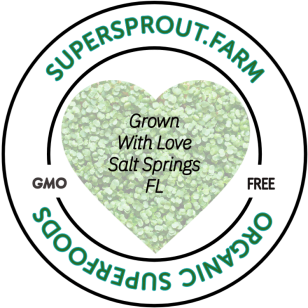
To keep SuperSprouts fresh for as long as possible, proper care and handling are essential. Here are some guidelines to help you maximize their freshness:
- Harvesting: Harvest SuperSprouts when they have reached the desired size. Use clean, sharp scissors or a knife to cut them just above the soil level. Avoid pulling or tearing the greens, as this can damage the delicate leaves.
- Cleaning: Gently rinse the harvested microgreens under cold running water to remove any dirt or debris. Shake off excess water or use a salad spinner to dry them carefully. Ensure that the SuperSprouts are completely dry before storage, as moisture can promote spoilage.
- Storage containers: Use clean and dry airtight containers to store SuperSprouts. Plastic containers or food-grade bags with small ventilation holes can work well. Alternatively, you can line the containers with paper towels or place the SuperSprouts between layers of slightly damp paper towels to help maintain moisture.
- Temperature and humidity: SuperSprouts are best stored at cool temperatures, ideally between 35°F to 40°F (1°C to 4°C). High humidity can lead to moisture buildup and spoilage, so aim for a relative humidity of around 95% to 98%. If your refrigerator has a crisper drawer, it can provide suitable conditions for storing SuperSprouts.
- Proper handling: When handling SuperSprouts, use clean hands or utensils to avoid introducing bacteria or contaminants. Touching the leaves excessively can cause bruising and wilting. Minimize handling and only remove the amount you plan to use, leaving the rest in storage.
- Shelf life: SuperSprouts are highly perishable, and their shelf life can vary depending on the type of greens and storage conditions. In general, they are best consumed within a few days of harvesting. Check the freshness by inspecting the leaves for discoloration, sliminess, or off odors before using.
- Avoid exposure to light: SuperSprouts are sensitive to light, so it’s best to store them in a dark environment. If using clear containers, consider wrapping them in a dark cloth or storing them in a dark cupboard to shield them from light exposure.
Remember, while these guidelines can help extend the freshness of SuperSprouts, it’s still advisable to consume them as soon as possible to enjoy their optimal taste, texture, and nutritional value.
What is the difference between sprouts and microgreens?
Sprouts and microgreens are both young and nutritious plant forms that have gained popularity in recent years due to their health benefits and culinary uses. While they share some similarities, there are distinct differences between the two:
- Growth Stage: Sprouts are germinated seeds that are harvested just as the root emerges and the seed leaves (cotyledons) develop. They are typically grown in water or a moist environment for a few days. Microgreens, on the other hand, are grown for a slightly longer period. They are harvested after the cotyledons have fully developed and the first set of true leaves has begun to appear. This growth stage lasts around 1 to 3 weeks, depending on the plant variety.
- Edible Parts: Sprouts are consumed in their entirety, including the root, seed, and young shoot. They are typically enjoyed raw and can be added to sandwiches, salads, or stir-fries. Microgreens, however, are harvested by cutting the stems just above the soil line, and only the above-ground parts (stems and leaves) are consumed. The roots are usually discarded. Microgreens are often used as a garnish, added to salads, sandwiches, or used in various dishes for their intense flavors and vibrant colors.
- Cultivation Method: Sprouts are typically grown in a controlled environment, such as a jar or tray with a moist and dark condition. They require regular rinsing and drainage to prevent the risk of bacterial contamination. Microgreens, on the other hand, are grown in a shallow container with a suitable growing medium, like soil or a soilless mix. They are usually grown in well-lit areas, including natural sunlight or under artificial grow lights.
- Nutritional Profile: Both sprouts and microgreens are considered highly nutritious. However, their nutrient compositions differ slightly due to variations in growth stages. Sprouts are known for their concentrated levels of vitamins, minerals, and enzymes. They are particularly rich in vitamin C, folate, and antioxidants. Microgreens, on the other hand, are more developed plants with their first true leaves, and thus they tend to have higher levels of certain vitamins and minerals compared to sprouts. For instance, microgreens can have higher amounts of vitamin K, vitamin E, and beta-carotene.
- Safety Considerations: There have been some concerns about the safety of consuming sprouts due to the risk of bacterial contamination. Sprouts grown in a humid environment can provide favorable conditions for bacteria, such as Salmonella and E. coli, to multiply. Therefore, it is crucial to ensure proper hygiene and safe handling practices when growing and consuming sprouts. Microgreens, on the other hand, have a lower risk of bacterial contamination because they are grown in a soil or soilless medium, which reduces the potential for pathogen growth.
In summary, sprouts and microgreens differ in their growth stages, edible parts, cultivation methods, nutrient profiles, and safety considerations. While sprouts are consumed whole at an earlier growth stage, microgreens are harvested after the development of true leaves and only the above-ground parts are consumed. Both offer nutritional benefits and can be enjoyed in a variety of dishes. SuperSprout.Farm’s product are 100% microgreens
